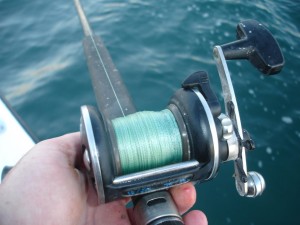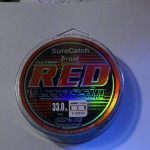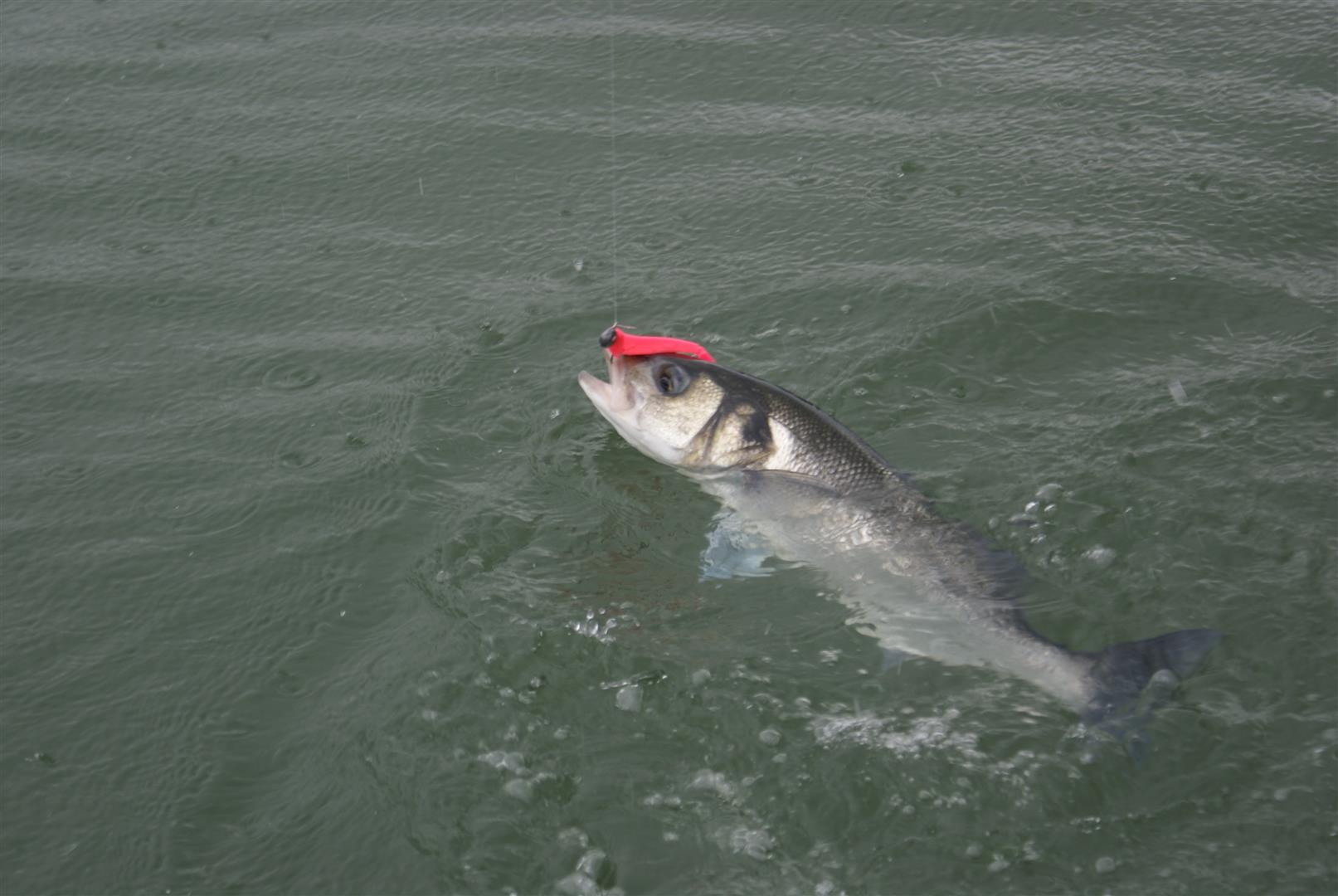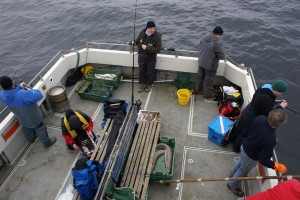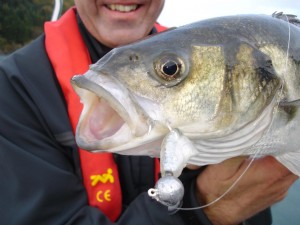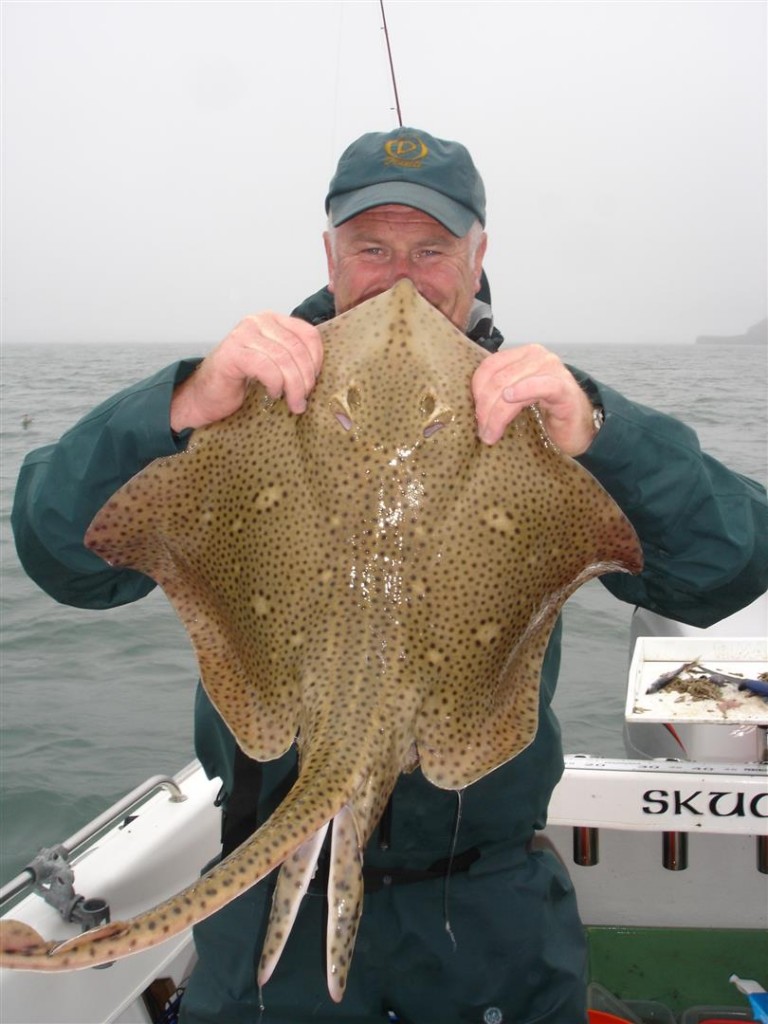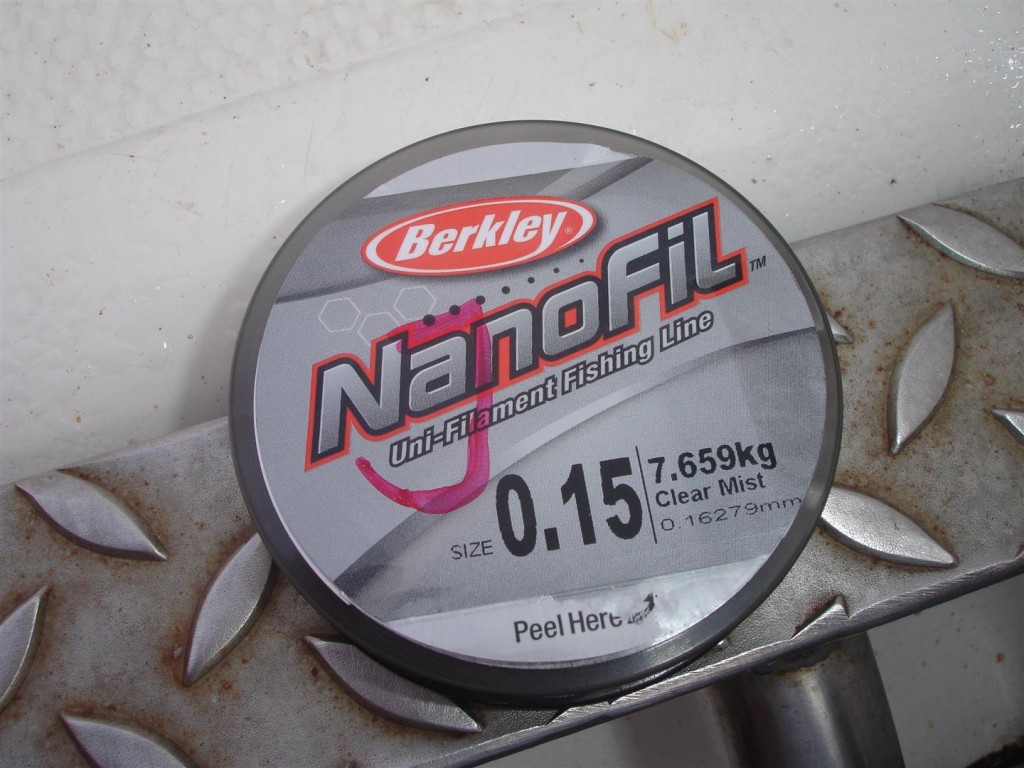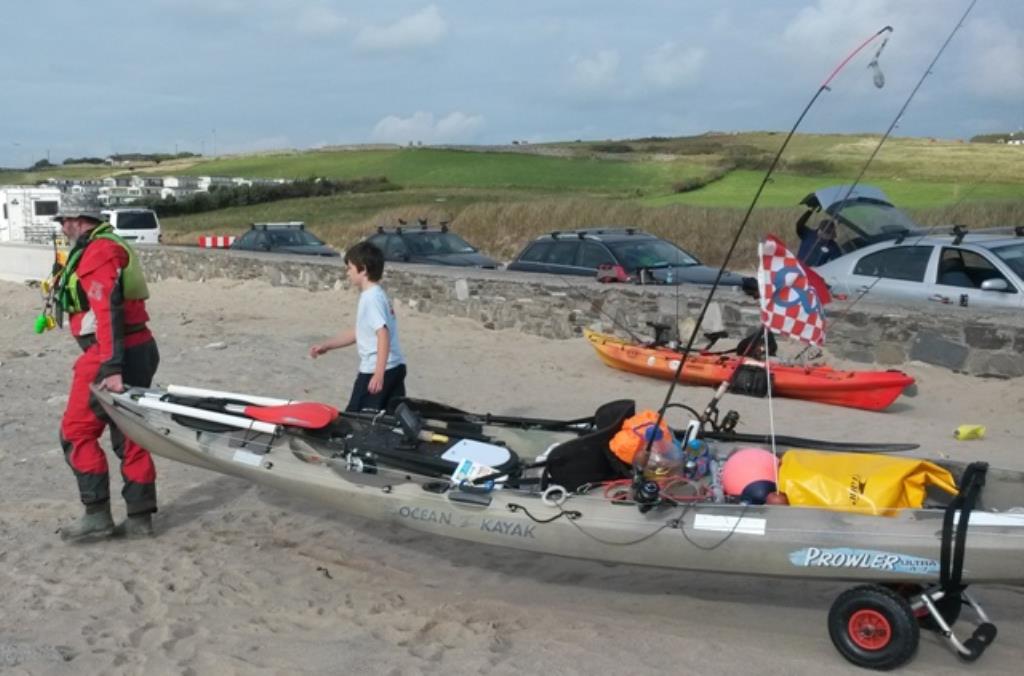* Line – Getting to the end of it!
I suppose most of us have our favourite lines. In fact, most of us do not give much thought to the lines we use once we are using our favourite, unless the unthinkable happens – you’re stuck into a good fish, you already have the net to hand, you’re even thinking about weighing and photographing your capture when suddenly the line parts and it’s all over. That sinking feeling you get when you know you have just lost a good fish is just terrible. Immediately you think about what might have been; a personal best without fail, maybe even a specimen. Now there’s a fish trailing a lure around, and all you have is another “one that got away” story for the bar. Invariably you will have a post mortem. Was it a swivel that let you down? Did your line part at a knot? Why did you not remove that frayed end section of your mainline before you began? Was it the line or the knot that gave way? Regardless of what you discover as a possible reason for failure, it’s imperative that you learn something from the ordeal and you make some change to your techniques or systems.
Changing times
I remember Dacron! As a youngster I gathered from the boat anglers I saw going from and returning to the slipway at Guileen that you were not cool unless you had a 6/0 Penn Senator loaded with Dacron. On my first forays onto the water I used a rod and reel belonging to my father – yes it was loaded with line that now could be used in a bailer or for wrapping parcels – white braided line with a green stripe running through it – Dacron. Although best consigned to history in boat angling terms, I was surprised to see Dacron is still in popular use as a fly line backing. And before you go throwing out the last remaining Dacron in your shed you can get a new lease of life from this old line when making stinger hooks for jigs – there is life in the old Dacron yet!
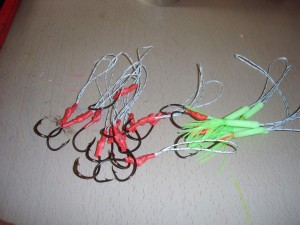
Dacron was the mainstay for boat anglers before, and for some time after, the arrival of monofilament line. Nylon monofilament was announced to the world in 1938 by the DuPont Corporation. The first monos were not popular with anglers and it was not until more supple lines came to the market that anglers began to use mono in place of braided lines. When you think of it, anglers were happy to sacrifice sensitivity for diameter! Monofilament became the line of choice for anglers until the 90s. Over the years mono was modified and formulations changed to make variations in diameter, colour and suppleness. Mono is still the material of choice for trace making. Think about the humble spool of Amnesia. It has been around since the 60s and is still one of the most popular trace making materials available.
Just like everybody else I started out using mono line for all my fishing requirements. Fifty pound breaking strain mono was the normal strength for the majority of boat angling. When I think back to the grief caused by trying to break out 50lb mono from a snag I can believe the figures that some monos can stretch by up to 30%! One thing mono has going for it as a mainline is price. You can buy a spool of mono that has close to a kilometre of line for a tenner!
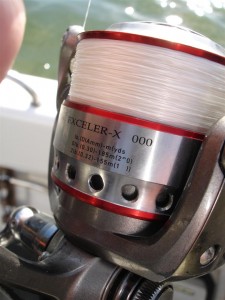
Braid
Angling, like life is, constantly evolving. Nothing stands still in the world of technology and inventions that may not have been developed for angling specifically find their way into the angling world. Think of carbon fibre. Formulated for industry and very expensive, it has gradually found its way into the angling world and has surpassed fibreglass as the choice blank making material. The same can be said for modern braided lines. All modern braided lines are made from Ultra High Modulus Polyethylene – let’s refer to the brand names of Spectra and Dyneema. Obviously Dyneema was not developed for the angling industry but companies such as Honeywell immediately recognised the potential that existed for a low diameter, low stretch line in angling. It seems incredible that super braids have only been around for about 30 years!
I remember buying my first spool of Penn Dynabraid. More to the point, I remember using my first spool of Dynabraid. It was unbelievable. I could feel everything, in fact it took some getting used to the ‘braid bites’. You could feel the lead trundling along the bottom as never before. This was all to do with lack of stretch. This lack of stretch was initially a problem where a broom handle of a rod was being used. It certainly got anglers freeing out the not oft used drags on their multipliers! Soon rods with a far greater degree of flexibility were popular – back to carbon fibre becoming more affordable.
At the outset anglers bought braid in diameters that were equivalent to the diameter of the mono we were normally using. This meant that it would not be unusual to see anglers loaded up with 80lb braid. This was not the best idea in hindsight because we lost out on one of the major benefits of using braid – it’s thinner than mono of the same braking strain – thus allowing the angler to use less lead to keep a bait on or close to the bottom. The downside to braided lines is the price. We are told that it used take a complicated weaving machine over 24 hours to make 100 meters of braid. In recent years braided lines have come down in price but they are still nowhere near the level of mono. That said, why would you choose to use mono over braid for boat angling whatever the price?
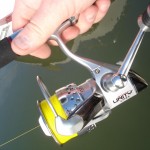
To combat the price differential there were many “bonded” Dyneema lines introduced to market. Instead of the Dyneema fibres being braided they were bonded together with a binding agent, a surface coating if you will. I tried a few different types of these lines over the years but never found one that would outperform the braided lines. In fact the outer coating tended to fray easily and the line would not last as long as a true braided line. After 20 years of ‘normal’ braided lines there was another breakthrough. Advances in weaving technology mean that lines can now be woven tighter than ever before. The result is lines that are of smaller diameter again that the braid we’re used to. Chemically bonded line sold under the trade name Nanofil is a further development in line made from Dyneema. Amazingly enough anglers did not take to Nanofil. Those that like it love it. Sales were not high enough… It’s going off market.
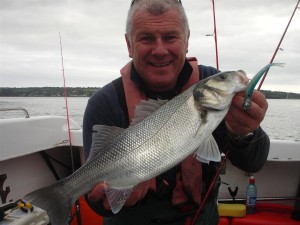
Fluorocarbon
Just when you thought that it was safe in the world of mono, despite there being a huge amount of different offerings, along comes fluorocarbon into the mix! The first time I heard mention of fluorocarbon line was through coarse anglers. Those carp fishermen are certainly suckers for anything new that comes along! So what was all the song and dance about? Well for starters the boffins tell us that fluorocarbon has a refractive index closer to that of water. This means that fluorocarbon should be almost invisible in water. It is denser than water so therefore it sinks in water. It is usually stiffer than standard mono. All these attributes immediately attract the angler. I’ve been using fluorocarbon for some traces and leaders for a few years now and to be honest I cannot say it has increased my catch rate. Let’s face it, we sea anglers don’t fish in gin-clear water too often. Many of the fish we’re trying to catch are not that finicky either. The thing is though, once you start using fluorocarbon you can’t stop for fear that it is making the difference!
In practice
So where do I stand on lines? What lines am I using? It should all come down to what you are comfortable with and which species you’re after. For the first time I can now say with certainty: I use polyethylene lines for all my fishing -Braid all the way! Mono has been relegated to trace making and leaders. I’ll start with the biggest fish we target regularly and work down! When shark fishing I am usually using Either multiplier or fixed spool reel loaded with 50lb OWNER Braid or Maxima. I have heard many extolling the folly of using braid for shark fishing. I reckon this is an urban myth created by tight charter skippers! It’s obviously a lot cheaper to spool up rental rods with mono than with braid. I have been using braid for years and have never had an issue with tangles or any problem landing sharks. Outgunning sharks with excessively heavy tackle or struggling with sticking drags on reels, poor knots and terminal tackle cause more problems for shark anglers than anything else. I appreciate that fact that if on a charter boat and you have ten anglers using ten different lines and different weight leads that it is almost inevitable that you will get tangles. This is usually not an issue for the dinghy angler. A bit of organisation and coordination on a charter boat between lines and weight sizes being used should avoid many tangles.
For the majority of my boat angling I use reels like the Penn Fathom loaded with 30lb braid. I have not seen the need to change from my standard braid to the thinner superbraids immediately. I will change over to superbraid as I begin to change line in the normal course of a season. I don’t see the need to ditch my normal braid until I need too. As the season progresses I will change over from 30lb/0.23mm braid to 30lb/0.19mm superbraid. I have landed big fish on 30lb braid, so I have no worries about taming that specimen conger or hauling that big wreck-dwelling cod. Your line is only as good as your drag and the quality of your rod. So a well-serviced reel combined with a rod with plenty grunt in the butt section but a fairly soft tip will allow you get the most from the fish and allow for the lack of stretch in your braid.
Many dinghy anglers worry about the “castability” of braids on multiplier reels. Few dinghy anglers are looking to achieve 150m from the boat. I find that once you make sure the line is laid nice and evenly across the spool on the retrieve and is not wound on with enormous strain, braid tends to be well behaved. The weight you use and the timing of your cast will cause more problems than the braid. It is not easy to cast a multiplier reel that is not set at the correct spool tension. It is also difficult to cast a multiplier when using light weights or for that matter overly heavy weights. Combine these factors with long traces and you have a recipe for tough casting or flicking, not issues with braid. If I want to be particularly accurate with a flick from the boat or if I will be actually casting a trace to a long distance from the boat I would be happier using a fixed spool reel. This is down to mechanics, nothing to do with the braid I will be using.
I have never been a fan of big-pit fixed spool reels for general boat fishing. I think it must be a traditionalist streak in me! Fishing in deeper water there is nothing like the feel of a multiplier. Fine, if you’re speed-fishing for tiddlers in a competition the big pit reels have advantages in retrieve speed, but for sheer pleasure it’s hard to whack a reel in the class of an ABU 6 or 7 or Penn Fathom or 525/535. And then just to contradict myself somewhat there is nothing I like more than tackling bass or pollack on lures. And when fishing for either species I love to fish with a light rod and a fixed spool reel! In fact when the situations demands accurate bait placement or constant flicking of light leads away from the boat I am at my happiest with a light rod and a fixed spool reel. Fighting a big shark or skate is also superb on a fixed spool set-up
Donkey Knots
For years I struggled with braided lines and fixed spool reels. I am sure I am not alone when I say I tried braid and soon reverted back to mono due to issues with ‘wind knots’. I was never happy reverting back to mono. Once you have been using braid it is very hard to go back to the elastic sensation of mono. I studied the problem and came to a simple conclusion – they are not wind knots! Invariably the so-called wind knot would form as a strand of line had looped over the top of the spool the moment when the bail arm closed or while you were working the lure. On your next cast this strand of line is pulled off the spool in a loop which tangles around itself and can tangle around the rod eyes at it heads out. It really is the stuff of nightmares. Since then I have adopted a simple approach – either close the bail arm with your hand or make sure that you glance down to see if the offensive strand of line is lying across the top of the spool. Take corrective action at that stage. Occasionally when there is a frenzy of fishing going on, the bass are switched on and boiling around you and you’re casting like someone possessed it’s easy to forget to check your spool. This is the only time I get knots at this stage and that is a rare occurrence. If I see a loop before I cast then I just cast more gently and take the loop out by hand before retrieving.
It’s in the field of lure angling that modern braids really come into their own. Lines like Strike-Pro Strike Wire or OWNER Kizuna have changed my attitude to lure fishing and increased my enjoyment. Combined with a decent reel in the 2000-4000 class and a short light lure rod, braid allows you to get more action into hard lures and oh boy, what an effect superbraid has had on fishing with soft plastics!
Maintenance and knots
How do you look after your line? I never have a trace around long enough to wear it out so minding mono is not an issue for me! I usually do not use a shock leader for general boat fishing. I monitor the condition of my line. Over a few sessions there will usually be some bit of abrasion close to the business end. I will cut off a few feet of line when I see the braid becoming fluffy. When lure fishing I always use a leader, or to be more correct a tippet. I use a fluoro tippet of around two feet. I don’t think the tippet has increased my catch rate. I like to tie my lures to the end of the line and it is easier to knot fluoro than braid. Also, because I’ve had success when using a tippet I’m reluctant to fish without one, despite the fact that it can be time consuming tying a fluoro tippet to braid, especially on a rolling boat. I have read comments about some makes of fluoro being brittle. I have tried many makes and never really had a serious problem with any. For the last couple of years I have settled on Surecatch or Berkley Trilene because it ticks all the boxes for me. Both are easy to knot.
Because braid is so thin there’s a good chance that a standard knot that did fine in mono will pull through with braid. Over the years I’ve settled on a few knots that have served me well. When tying a swivel to the business end I use a Palomar knot. This is amazingly simple to tie and is regarded as a knot that retains great line strength. When tying my tippet of fluoro to braid I use an Albright or Improved Albright in recent times I like to use a Yucatan knot. You will get brilliant instructions on tying both knots on the Internet, especially on YouTube. I would suggest that you should practise your knots at home. When learning the Albright I tied hundreds of knots in the kitchen. Eventually I could do it without thinking. There is nothing worse than trying to remember a knot when you should be fishing! Make sure you have a good quality braid scissors in you tackle box for easy trimming of tag ends.
In the end, as you can see, I like simplicity and consistency when it comes to my main line. There is no option for me any more – mono main line does not cut it when it comes to boat fishing. There are superb monos out there for trace building and leader tying – Hi-Tensile Formula leader is incredibly supple in all strengths and is especially effective for wrecking traces and conger leaders and as mentioned already it is hard to beat the good old spool of Amnesia for lighter traces. My traces are always simple. Whether tackling finicky flounders or hard chomping wrasse, I like to tie solid traces that will not tangle. Quality mono is the key to effective trace building. There are some great deals out there. Manufacturers are competing for your euros like never before. You’ll get a better deal now than when the first hint of decent spring weather arrives. The problem is if you change line now you’ll just want to get fishing!
[box type=”info” border=”full”]
The Rating V’s Diameter Quandry & Fake Braid
Put simply, if you want to take your chances with line offered by some sellers on ebay or aliexpress you take your chances. If it looks to be very cheap then the chances are that the branded line you are buying is a fake. Choose your braid depending on what you want the braid to do for you. If you are beach fishing you may want abrasion resistance and strength and the “No Stretch”, then you can be less fussy about your braid as diameter will be less important. If you are fishing and want the benefit that lower diameter gives you then you must be more discerning about the braid you purchase. There is no set format to how braid is stated on the packet. EU sold braid is generally expressed in Absolute breaking strain. American braid is generally expressed in Lbs test. The Americans bring in a knot to the equation and therefore their line tends to be much thicker for the stated breaking strain than an EU braid. However many braids test to double their stated strength. The bottom line here is to be wary when ordering on line -The 20lb American labelled braid may have a diameter more like a 50 or 60lb braid (off the top of my head!). Most braids are thicker than the stated diameter…braid is not round so it is difficult to get a proper measurement. So do you buy : EU: 8.2kg 0.13mm or US 10lb 0.20mm (These are the specs for Sufix 832) Imagine you order 20lb US – it is going to be fairly thick! I use OWNER Kizuna most of the time. I have tried many different high quality braids over the last couple of years and always tend to be happiest with OWNER Kizuna (9kg 0.13mm). I was pleased with Sufix 832 recently too (18lb 0.13mm). I want the benefit of thin braid but need the benefit of some strength to pull through snags. There is a lot to be said for touchy feely in the shop! There are lots of forgeries online. It is all braid so you are not doing too bad! Much of the time it is four strand sold as eight strand and such like. You are in the lap of the gods regarding diameters etc.[/box]






